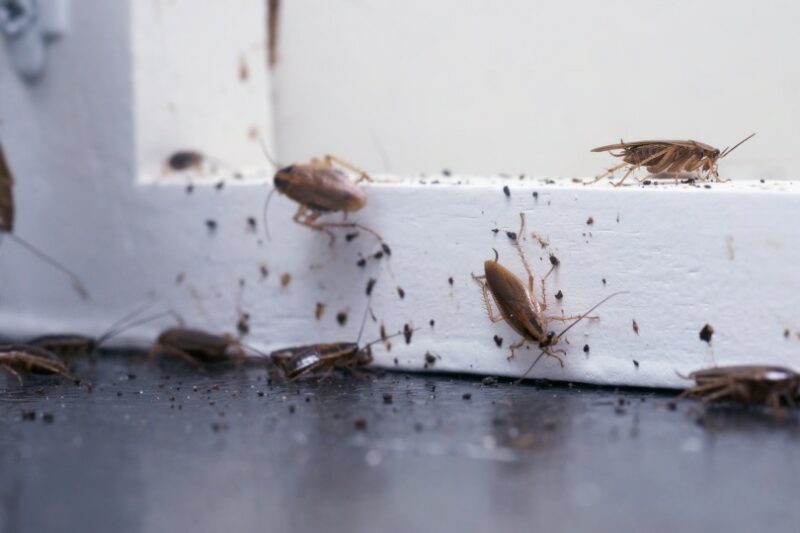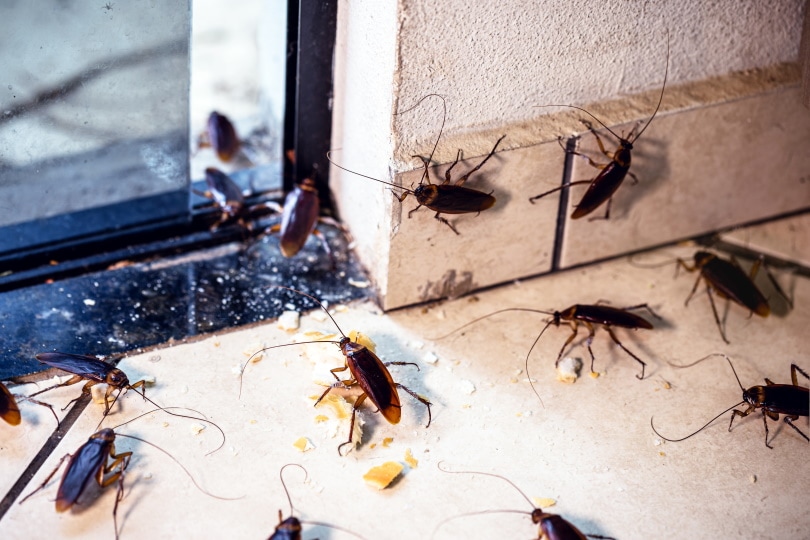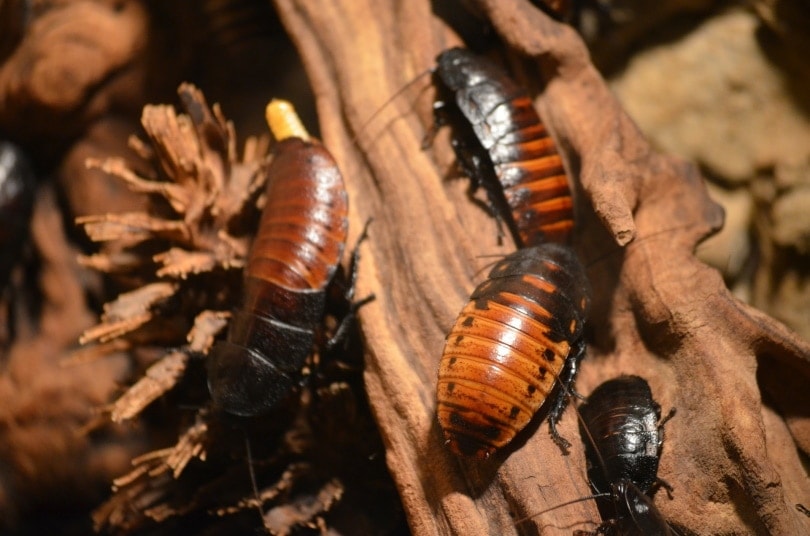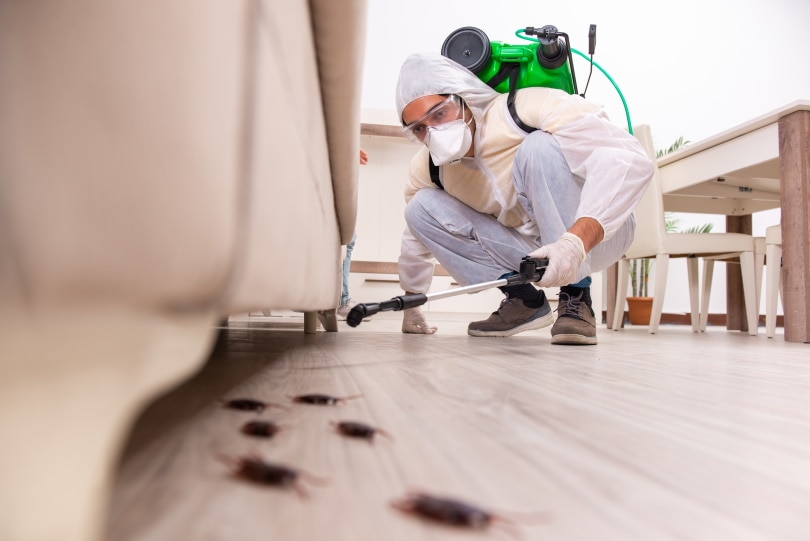Will Roaches Leave a Cold House? What You Need to Know
-
Chris Dinesen Rogers
- Last updated:

Just the word “cockroach” is enough to make most people cringe. If there’s anything positive you can say about cockroaches, it’s that they are survivors. Few organisms have existed as long as these pests have, with an evolutionary history going back up to 235 million years ago1. These insects are ectotherms, meaning that their environment determines their body temperature.
If you have seen a roach or two in your home, you may wonder if you can use that fact to get rid of them by turning down the thermostat. Unfortunately, roaches probably won’t leave a cold house. Curious to learn more? Read on!
Survival and Adaptability
It’s true that cockroaches prefer warm temperatures. Most of the more than 4,000 species live in tropical climates. Only four are significant pests in North America. They include the following:
- Brown-banded cockroach (Supella longipalpa)
- Oriental cockroach (Blatta orientalis)
- German cockroach (Blattella germanica)
- American cockroach (Periplaneta americana)

None have any special status with the International Union for Conservation of Nature and Natural Resources (IUCN). Nevertheless, despite their tropical origins, roaches show remarkable resilience to challenging environmental conditions. However, that explains why the most infested cities in the United States are down south, including New Orleans, Birmingham, and Tampa.
Cockroaches live just about anywhere in the world, even in the cold reaches of the Arctic. They survive because they are adaptable. They are also omnivores, which allows them to find food wherever they are. Humans have also played a significant role in dispersal, fostering this trait. We also have inadvertently provided cockroaches with the ideal living conditions—in our homes!
Cockroaches and the Cold
Cockroaches respond to changes in the environment just like any other organism. If temperatures dip below 45℉, they simply shut down biologically. The key to managing extreme conditions is how quickly they occur and whether the roaches have time to adapt. Let’s say that you turn off your furnace, assuming it’s possible. Your house will get cold, but not right away.
That time difference gives the roaches an edge. It’s worth noting that previous exposure to colder temperatures gives North American cockroaches an advantage. Research has shown that even a tropical species (Gromphadorinha coquereliana) has some capacity to survive. In this study, 90% of the insects died after four days of complete freezing.
Arctic species have evolved to tolerate temperature extremes by various behavioral and physiological mechanisms, with some producing glycerol to survive. Others avoid the physical damage of freezing by entering a state called anhydrobiosis. The cockroaches dehydrate, which prevents it from occurring. Other times, they just seek warmer places within a building.
The takeaway is that cockroaches are evolutionarily capable of adapting to whatever conditions in which they live. Simply keeping your house cold isn’t going to get them to leave. That’s not to say that freezing temperatures can’t kill roaches. If you gathered a bunch of them in a jar and put it in the freezer, they would die. The difference is the time that they have to adapt to the cold.
However, it’s certainly not a solution. You’ve likely heard the adage that if you see one cockroach during the day, you have a major infestation. It’s true. These insects are social creatures. If you want to get rid of them, you’ll have to use another solution than turning down the temp in your house.
Find a pest-control specialist in your area, and get free, no-commitment estimates for your project.Consult a PEST-CONTROL expert


Getting Rid of Cockroaches
If you have a roach problem, you have four options.
- You can clean things up to ensure that they don’t have food, water, or shelter. It’s a strategy that works with many pests. It makes living in someplace too expensive from an ecological and biological point of view. An organism will look for easy pickings and a safe place to hide during the day.
- The second option is trapping the cockroaches. It’s worth noting that evolution has benefited these insects in another way that makes this solution a viable one, insecticide resistance. These pests are opportunistic feeders, making a bait trap an effective method against them.
- The third option is pesticides that still work on cockroaches. It’s imperative only to use products formulated for cockroaches. Synthetic products have an advantage over broad-spectrum so-called natural solutions. The former targets just the pest and no other species, such as pollinators. You should follow the manufacturer’s instructions to the tee and use them only as directed.
- The fourth option is the best one of the lot with the fewest risks and aggravation. Prevent the cockroaches from entering your home in the first place. Simple things, such as sealing cracks and crevices in your house’s foundation, can go a long way to avoiding problems with roaches and other pests. Proper sanitation is also critical.
A cockroach infestation is a significant issue. These insects can carry pathogens into your home. They can also cause . That’s saying nothing about how upsetting it is to see them in your house. Often, it’s the wisest plan to call in a professional to handle the problem. The sooner you act, the easier they are to control.
- Related Read: 13 Home Remedies for Cockroaches (with Pictures)

Final Thoughts
It would seem that a cold house would be a deterrent for a tropical insect like the cockroach. Unfortunately, evolution and its physiology give this pest the upper hand. As we’ve seen, roaches have survived by various means that have undoubtedly helped them withstand whatever humans have their way. Perhaps learning more about these organisms can help us find more ways to control them.
Featured Image Credit: IrinaK, Shutterstock
Contents

